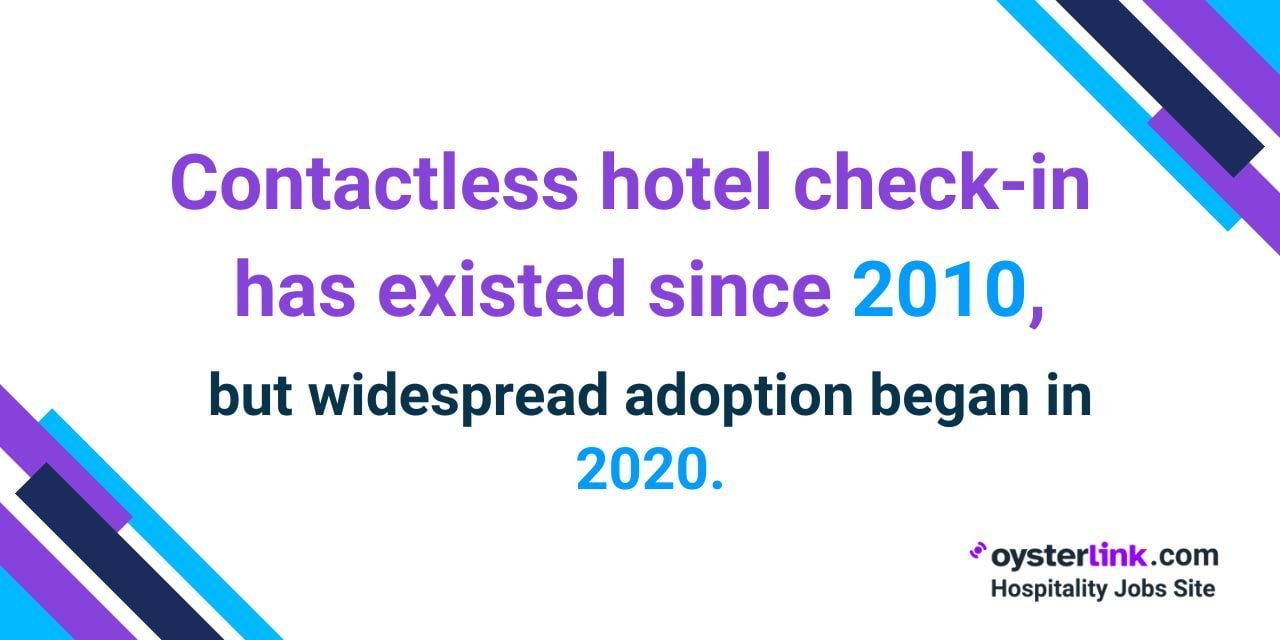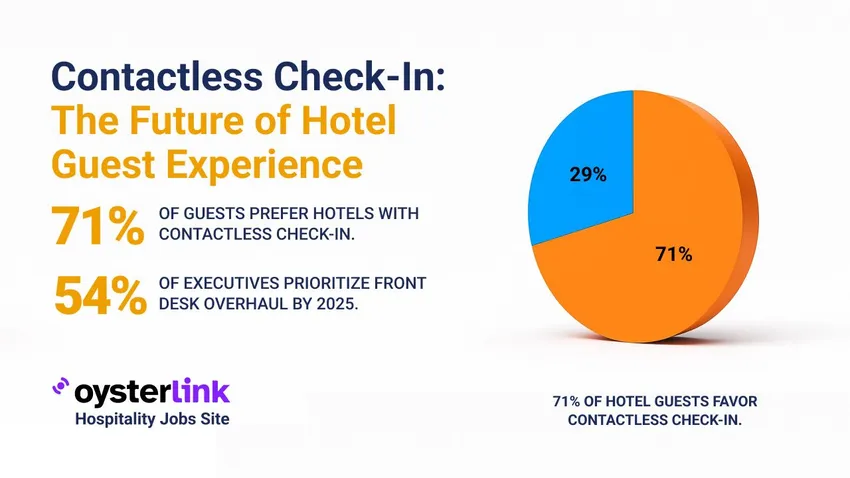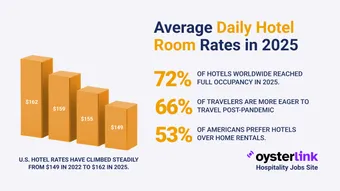Contactless Check-Ins: Key Findings
- 71% of hotel guests are more likely to book with properties offering contactless check-in options.
- The contactless hotel check-in market is valued at $1.5 billion (2023) and projected to reach $4.8 billion by 2032 with a 15.7% CAGR.
- Automated upsells during mobile check-in can increase per-guest spend by 20% or more.
What began as a pandemic workaround is now a baseline expectation among digital-first travelers. Hotels that haven’t adopted contactless check-in risk falling behind on guest satisfaction, efficiency and revenue.
This guide explores the technology, adoption trends and what’s next for no contact check-in hotel systems.
How Contactless Check-In Started
The earliest examples of contactless hotel check-in date back to the early 2010s, but adoption was slow.

It wasn’t until the COVID-19 pandemic in 2020 that widespread implementation took off, driven by safety concerns and changing guest expectations.
Since then, contactless check-in has evolved into a scalable and guest-centric solution now common across hotel segments.
A key feature of contactless check-in hotel systems is their integration with the hotel’s property management system (PMS).
This enables real-time room status updates, loyalty program syncing and pre-arrival upsells.
Mobile room keys, automated check-in flows and app-based concierge tools are now widely deployed across hotel segments.
Contactless Check-In and Guest Expectations in 2025
Digital convenience has become a baseline expectation.
According to the Oracle Hospitality Report, 71% of hotel guests are more likely to book with properties offering contactless check-in options.
HotelTechReport notes that 26% of guests want digital room keys, and 35% expect contactless payments.
Another survey found that 70% of travelers prefer checking in through mobile or web apps.
.png)
Guests appreciate the ability to skip lines, access their room faster, and reduce physical contact. Among millennials, 89% are willing to use mobile check-in.
SuitePad highlights digital check-in as one of the top five digital trends in hospitality for 2025, alongside in-room tablets, digital guest directories and mobile messaging platforms.
Operational Benefits of Contactless Check-Ins for Hotels
Contactless check-in is not just guest-friendly — it’s good for business. By automating front desk processes, hotels reduce staff workload, improve turnaround times and decrease human error.
Returning guests can now complete self-check-in in under two minutes. At scale, this reduces front desk bottlenecks during peak hours and frees up staff to handle more complex tasks or deliver personalized service elsewhere in the hotel.
In terms of revenue, digital check-in solutions enable upselling during the arrival process. Guests can upgrade rooms, request early check-in or late checkout and purchase add-ons directly through the app or kiosk.
Studies show that AI-driven, automated upsells (including during mobile check-in) can increase per‑guest spend by 20%–35%.

Contactless Check-In Industry Adoption & Market Forecast
Adoption is strong and growing.
According to Oracle Hospitality’s report, conducted in partnership with Skift, 54% of hotel executives identified improving or eliminating the front desk experience — including mobile check-in/out — as their highest tech priority through 2025.
The contactless check-in hotel technology market was valued at approximately $1.5 billion in 2023. It is projected to grow at a CAGR of 15.7%, reaching $4.8 billion by 2032.

Cloud-based platforms like Mews, Cloudbeds and Duve are leading the shift by offering PMS-integrated, mobile-first solutions. Self-service kiosks, such as those from Canary and OpenKey, are also gaining traction in urban and airport hotels.
Common Tools Used for Contactless Check-In
Below are the most common technologies supporting today's no contact check-in hotel systems.
- Mobile/Web Pre-Check-In: Guests receive a link or app notification to complete ID verification, payments, and preference selection before arrival.
- Digital Room Keys: Delivered via app or QR code, allowing room access without a physical card.
- Lobby Kiosks: Touchscreen stations used for walk-in check-in or guests without smartphones.
- Facial Recognition: Deployed in select hotels in Asia and expanding globally by 2026.
- Integrated Messaging: Real-time chat or SMS updates for room status, check-in steps, and concierge services.
All of these features rely on secure data encryption, GDPR/CCPA compliance and seamless backend integration with PMS, CRM and POS systems.
What Contactless Check-In Looks Like by 2030
As technology continues to advance, the next wave of contactless hotel check-in will extend far beyond arrival. Here’s what hotels and guests can expect in the years ahead.
- AI-Powered Check-In Assistants: Chatbots and voice interfaces will guide guests through the check-in flow.
- Smart Room Integration: Lights, climate, and entertainment preferences will be configured automatically upon check-in.
- Biometric Authentication: Expected to become mainstream in upscale and airport hotels.
- Sustainability Metrics: Contactless systems reduce paper, plastic and energy use.
- Work-from-Hotel Integration: Flexible check-in options will support remote workers and digital nomads.
Contactless Check-In as the New Standard in Hospitality
Contactless check-in has become the new standard in hospitality. What started as a response to a crisis has transformed into a core component of the modern guest experience.
Hotels embracing this technology are better positioned to meet evolving expectations and streamline operations.
To remain competitive, hotels must invest in the right platforms, ensure smooth integration and train teams to manage a hybrid digital-physical guest journey.
Contactless hotel check-in isn't just a trend — it's the future of the guest experience.










Loading comments...